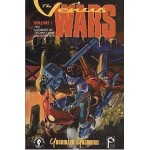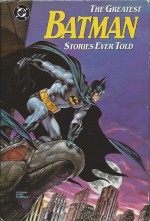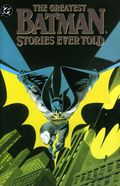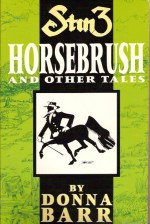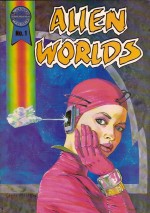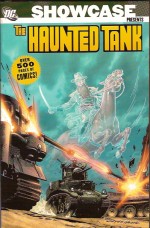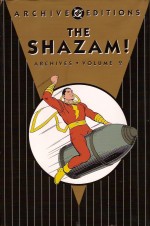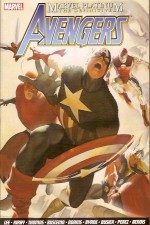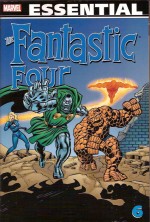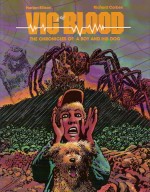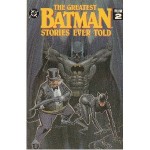
By Bob Kane, Bill Finger, Dennis O’Neill, Irv Novick, Steve Englehart, Marshall Rogers & various (DC Comics)
ISBN: 1-56389-037-2
By the time this sequel collection of Batman classics appeared, graphic novels were becoming fully established as a valuable second marketplace for comic adventures, not just celebrating standout stories from the company’s illustrious and varied history but also as a format for new and significant works.
They were also a superb high-ticket item for enhancing public buzz from media events such as the follow-up Batman Returns movie. However, although this tantalising selection of tales starring Catwoman and the Penguin was designed to cash in on the second feature film, it does contain a superb procession of brilliant criminal clashes which no true fan of Fights ‘n’ Tights fiction could resist…
After ‘Of Fowls and Felines: Fifty Years of Felony’, an erudite introduction by Marty Pasko, and Mike Gold’s fact-filled Foreword ‘The Deadliest Duo’, both liberally illustrated with pin-ups by José Luis GarcÃa–López, Brian Stelfreeze, Jim Aparo, Don Newton, Brent Anderson and others, the dramatic duels begin with ‘The Cat’ (by Bill Finger, Bob Kane & Jerry Robinson from Batman #1, Spring 1940) – later adding the suffix ‘Woman’ to her name to avoid any possible doubt or confusion – who plied her felonious trade of jewel theft aboard the wrong cruise liner and fell foul for the first time of the dashing Dynamic Duo, whilst the perfidious Penguin debuted in Detective Comics #58 (December 1941, by Kane, Finger, Robinson & George Roussos) primed to make the Batman and Robin the victims of ‘One of the Most Perfect Frame-Ups’…
‘The Secret Life of Catwoman’ comes from Batman #62 (December 1950-January 1951, by Finger, Kane & Charles Paris) and saw the Felonious Feline reform and retire after a head trauma cured her larcenous tendencies, after which ‘The Penguin’s Fabulous Fowls’ from #76 (April-May 1953 by Edmond Hamilton, Kane & Paris) found the Umbrella King turn xeno(crypto?)-biologist to capture mythical avian monsters and turn them loose in Gotham…
January 1954’s Detective Comics #203 exposed the ‘Crimes of the Catwoman’ when the bored and neglected Selina Kyle took up her whip and claws once more to prove she was still the Queen of Crime in a classy caper by Hamilton, Kane & Paris.
In the mid 1950s costumed villains faded from view for almost a decade until the Batman TV show made them stars in their own right.
Batman #169 (February 1965) saw the wily, bird-themed bad-man triumphantly return to make the Caped Crusaders his unwilling dupes and ‘Partners in Plunder!’ in a stirring romp by Ed “France†Herron, Sheldon Moldoff & Joe Giella, whilst full-length epic ‘The Penguin Takes a Flyer into the Future’ (#190 March 1967 by Gardner Fox, Chic Stone & Giella) mixed super-villainy and faux science fiction motifs for an enjoyable if predictable fist-fest.
When the Tigress of Terror eventually resurfaced with Batman #197’s ‘Catwoman Sets her Claws for Batman’ (December by Fox, Frank Springer and Sid Greene) the frankly daft tale pitted her in romantic combat against Batgirl for the Gotham Gangbuster’s attentions. This one is most fondly remembered for the classic cover of Batgirl and whip-wielding Catwoman squaring off over Batman’s prone body – comic fans have a psychopathology all their very own…
Batman #257 in July-August 1974 produced a canny thriller in ‘Hail Emperor Penguin’ by Denny O’Neil, Irv Novick& Dick Giordano, wherein the Parasol Plunderer kidnapped a young Middle Eastern potentate and fell foul of both Batman & Robin and Demon’s Daughter Talia Al Ghul.
The Teen Wonder returned in Detective Comics #473’s ‘The Malay Penguin!’ as the podgy Napoleon of Crime challenged the temporarily reunited Dynamic Duo to an entrancing, intoxicating duel of wits, courtesy of Steve Englehart, Marshall Rogers & Terry Austin from November 1977.
After an informative ‘Catwoman Featurette’ from Batman #256 May (Jun 1974), a two part Catwoman solo feature by Bruce Jones, Trevor Von Eeden & Pablo Marcos proved her potential as a force for Good in ‘Terror Train’ and ‘In the Land of the Dead’ from Batman #345-346 (March and April 1982) whilst ‘Never Scratch a Cat’ from #355 (January 1983, by Gerry Conway, Don Newton & Alfredo Alcala) re-emphasised her savage, independent nature and unwillingness to be ignored by the Dark Knight…
A ‘Penguin Featurette’ from Batman #257 then precedes ‘Love Birds’ from Batman Annual #11 (1987) wherein Max Allen Collins & Norm Breyfogle explored the Penguin’s softer side – and found it lacking – before ‘Eyrie’ (Detective #568, November 1986 by Joey Cavalieri & Klaus Janson) firmly re-established the Little Emperor of Crime’s stylish, deadly and bloody bona fides in a chilling tale of extortion and murder…
This terrific tome, edited by Paul Kupperberg and Robert Greenberger – who provided the creator biographies and End-notes – is also packed with many compelling cover reproductions filling up all those half-page breaks which advertised new comics in the originals to make this another captivating collection of utter superhero excellence: fun-filled, action-packed and wildly beguiling.
© 1940, 1941, 1953, 1954, 1965, 1967, 1974, 1977, 1982, 1983, 1986, 1987, 1992 DC Comics Inc. All Rights Reserved.

